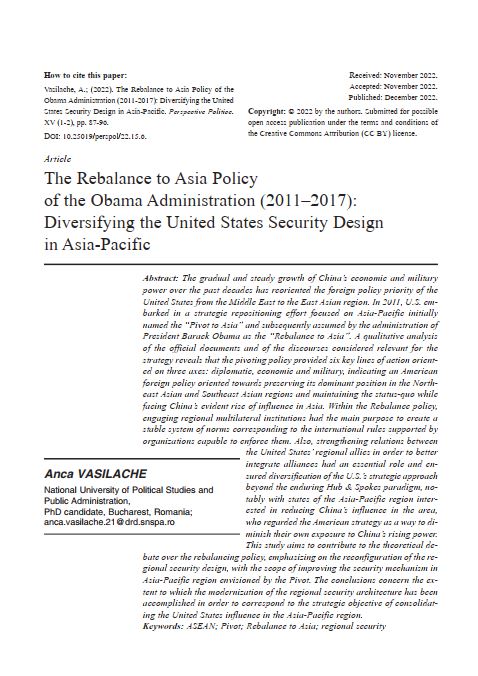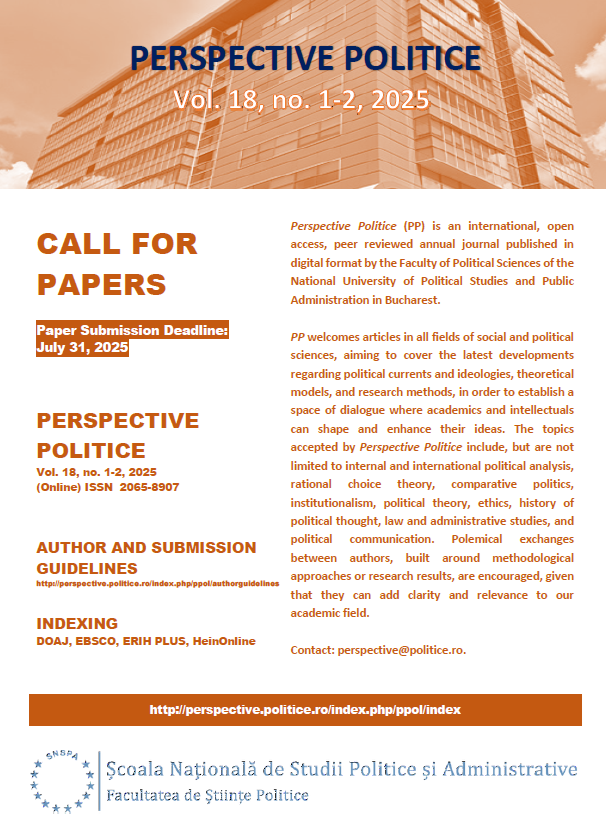The Rebalance to Asia Policy of the Obama Administration (2011–2017): Diversifying the United States Security Design in Asia-Pacific
Abstract
The gradual and steady growth of China’s economic and military power over the past decades has reoriented the foreign policy priority of the United States from the Middle East to the East Asian region. In 2011, U.S. embarked in a strategic repositioning effort focused on Asia-Pacific initially named the “Pivot to Asia” and subsequently assumed by the administration of President Barack Obama as the “Rebalance to Asia”. A qualitative analysis of the official documents and of the discourses considered relevant for the strategy reveals that the pivoting policy provided six key lines of action oriented on three axes: diplomatic, economic and military, indicating an American foreign policy oriented towards preserving its dominant position in the Northeast Asian and Southeast Asian regions and maintaining the status-quo while facing China’s evident rise of influence in Asia. Within the Rebalance policy, engaging regional multilateral institutions had the main purpose to create a stable system of norms corresponding to the international rules supported by organizations capable to enforce them. Also, strengthening relations between the United States’ regional allies in order to better integrate alliances had an essential role and ensured diversification of the U.S.’s strategic approach beyond the enduring Hub & Spokes paradigm, notably with states of the Asia-Pacific region interested in reducing China’s influence in the area, who regarded the American strategy as a way to diminish their own exposure to China’s rising power. This study aims to contribute to the theoretical debate over the rebalancing policy, emphasizing on the reconfiguration of the regional security design, with the scope of improving the security mechanism in Asia-Pacific region envisioned by the Pivot. The conclusions concern the extent to which the modernization of the regional security architecture has been accomplished in order to correspond to the strategic objective of consolidating the United States influence in the Asia-Pacific region.

Downloads
Published
Issue
Section
License
Copyright (c) 2022 Anca VASILACHE

This work is licensed under a Creative Commons Attribution-NonCommercial-ShareAlike 4.0 International License.



